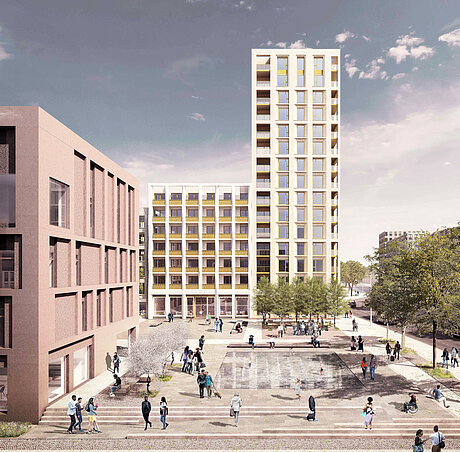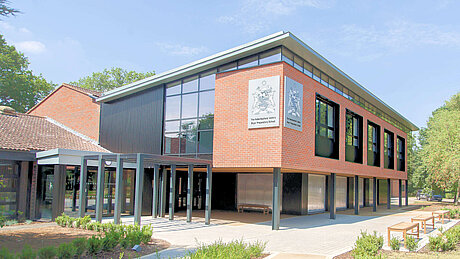Reinforced concrete walls and columns as well as masonry walls with optimized energy efficiency and structural design
Reinforced concrete, especially architectural concrete, plays an increasingly important role in the design of aesthetically desirable buildings. As a result, reinforced concrete walls and columns are characteristic features of modern architecture. However, these components often cause high energy loss thermal bridges. For years, there has been increasing pressure to insulate these thermal bridges effectively and easily and to exploit this great potential to optimize buildings’ overall energy balance.
read more
Aesthetic and building-physics challenges
When building with reinforced concrete, its excellent structural and visual properties as well as the actual reinforcement with reinforced concrete walls, are often accompanied by high thermal conductivity. Especially at the transition from warm to cold parts of the building, thermal bridges at reinforced concrete walls and columns cause large energy losses, with negative consequences for the room climate, and can be responsible for construction damage. Direct insulation of these thermal bridges would ensure a continuous thermal insulation layer and contribute to an aesthetically pleasing, energy-efficient and sustainable building concept.
Until now, the only way to reduce thermal losses and risk of construction damage in reinforced concrete walls and columns was with flanking insulation, which is less effective and more expensive. The limitation in appearance and design, material changes on component surfaces and effective space losses make it a very unfavorable and unpopular solution.
The solution for vertical thermal bridges with Schöck Sconnex®
The innovative Schöck Sconnex® product family offers a holistic solution for complex requirements with a new form of thermal insulation. Specially developed for reinforced concrete walls and columns, Sconnex® reduces thermal bridges in the connection detail to floor slabs and ceilings, while opening up more design freedom and offering potential for economic optimization.
Another area of application: masonry walls
Moisture in walls is a frequent cause of construction damage, which often has far-reaching consequences, especially in masonry walls. Furthermore, thermal bridges are formed, and the resulting high thermal losses contribute to a deterioration of the building’s energy balance.






